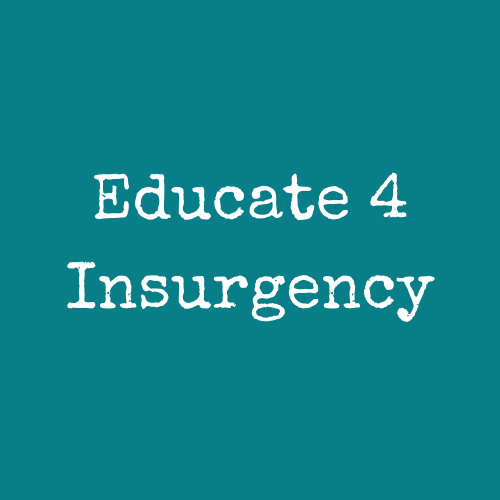One strength of peer- and near-peer teaching is that young people use communication networks that are often unavailable to teachers and school districts.
Of course, many students are connected through social media networks, and they are also connected through family and community networks, as well.
Schools should ask young people to help them mitigate the “distance” problem in “distance-learning” by paying them to activate their social networks on behalf of the schools’ engagement goals.
Students naturally reach out to each other for various kinds of school related information. But they could structure their intra-group communication much more effectively if we added some intentionality through cash payments and thoughtful organizing.
For example, a high school teacher could invite four or five of their students to become co-teachers in this year’s course. Those few students and the teacher might meet virtually once or twice a week to learn the week’s material. (We’re going to set aside the important question of “What material?” for later posts.)
The co-teachers can invite their various network contacts within the teacher’s class to participate in small “affinity groups.” The co-teaching students can help their affinity group get access to the teacher’s materials, can help clarify assignments, and troubleshoot questions or confusions. Student co-teachers can also make friendly attempts to contact students who aren’t engaged and find out what’s going on--completely in confidence.
Co-teachers would need to be paid serious money, and there would have to be a way to decide expectations and responsibilities for compensation. Teams of students could certainly develop these parameters in a way that was fair, and they could also check in with each other through peer accountability structures, to ensure work was being performed.
The benefits of even a few such co-teaching teams in a single school would be great. Of course, the students involved as co-teachers will learn more in the subject area. But also, all the students in the class—co-teachers and the other students—would begin to understand themselves as contributing to and helping to determine the learning environment. This change in perception—from consumer of education services to co-producer of real learning—is a crucial element missing from many reformist projects.
Teachers can still review work products, comment and interact—either directly with each student, or indirectly through the co-teachers. The point is, everyone is involved in positive interactions around the content of the course, rather than in negative interactions around what the young people are failing to accomplish.
People can come up with many objections to this idea: Where will the money come from? What about confidentiality? What if the co-teaching students give wrong information to their peers? What does a co-teaching student do if they learn about a situation that a teacher would have to report to authorities by law?, etc.
All good questions, and all questions that groups of human beings in their local circumstances are capable of wrestling with, learning from, and gradually solving to a greater or lesser extent. Open dialogue builds trust, knowledge, and competence, and slowly raises the quality of social interactions. Rough spots and conflict are to be expected, but there’s no way to avoid the rough spots and conflict. Either you deal with them in the open, or you sweep them under the rug.
I’m delighted to help anyone who wants to try to get structures like this started. Feel free to reach out: Twitter: @jaymgillen email: gillen.jay@gmail.com or contact me on the website: Educate4Insurgency.org


